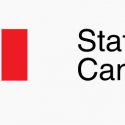Bonuses On Passive Investment
Nelson Smith argued against the popular opinion that allows others to think that it’s hard to earn from real estate, he says investing in real estate is not as difficult as it seems, as long as one is cautious and avoids seemingly attractive investments that are actually pitfalls that might get them in trouble.
Nelson penned down; “The first thing to do is create some leverage. Say you started out with $50,000 of your own capital with the ability to borrow $30,000 more at an interest rate of 3%. You’d then take that $80,000 and invest it with a brokerage.”
“The next step is picking a brokerage with low margin rates,” he added. “You’ll want to pick a brokerage with rates in the neighborhood of 2%.”
“Once the money is ready to go, understand the rules for investing in margin debt. Most Canadian REITs are eligible for what’s called reduced margin, meaning the equity in your account only has to be 30% of the total amount invested. Suddenly, $80,000 in original capital can control $250,000 in assets.”
The option mentioned above might not be the best solution, most especially, if equity is lower than the 30 per cent benchmark for a certain period, an investor will have to be faced with a margin call. “If enough capital isn’t added to the account to get it to good standing, the shares are automatically sold at a loss.” In a case like this, a 50 per cent equity and 50 per cent debt split will cause “some wiggle room in case the price of the underlying assets falls. This means an investor could end up controlling $160,000 worth of assets while only putting up $50,000 of their own cash,” if maintained.
“Ideally, investors would use the proceeds to create a high-yield portfolio with many different kinds of assets. Diversification helps to reduce risk, which is doubly important when borrowing.” In conclusion to what Smith had to say, he ended by saying with every attempt, in order to achieve long-term success, the key is versatility.





